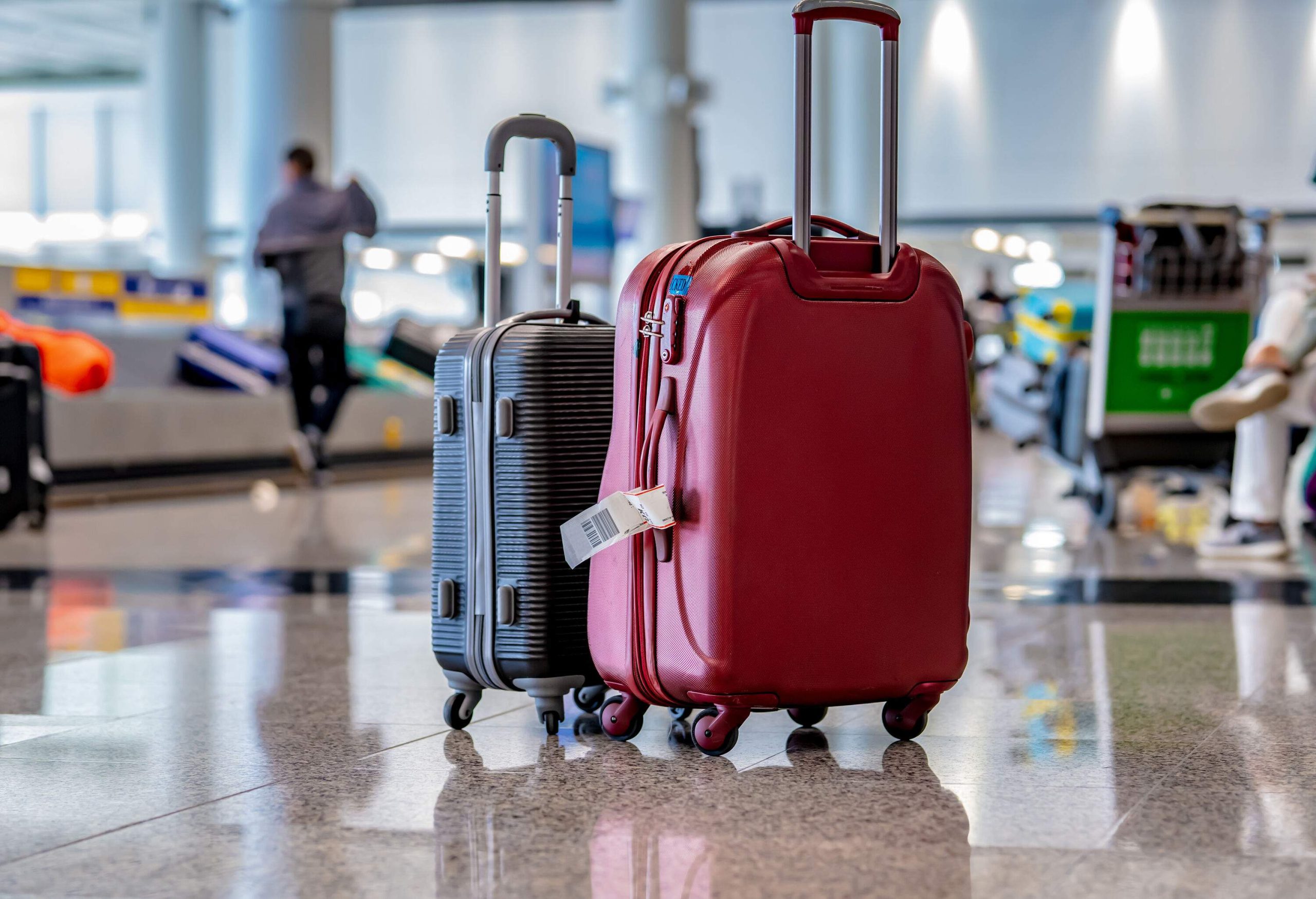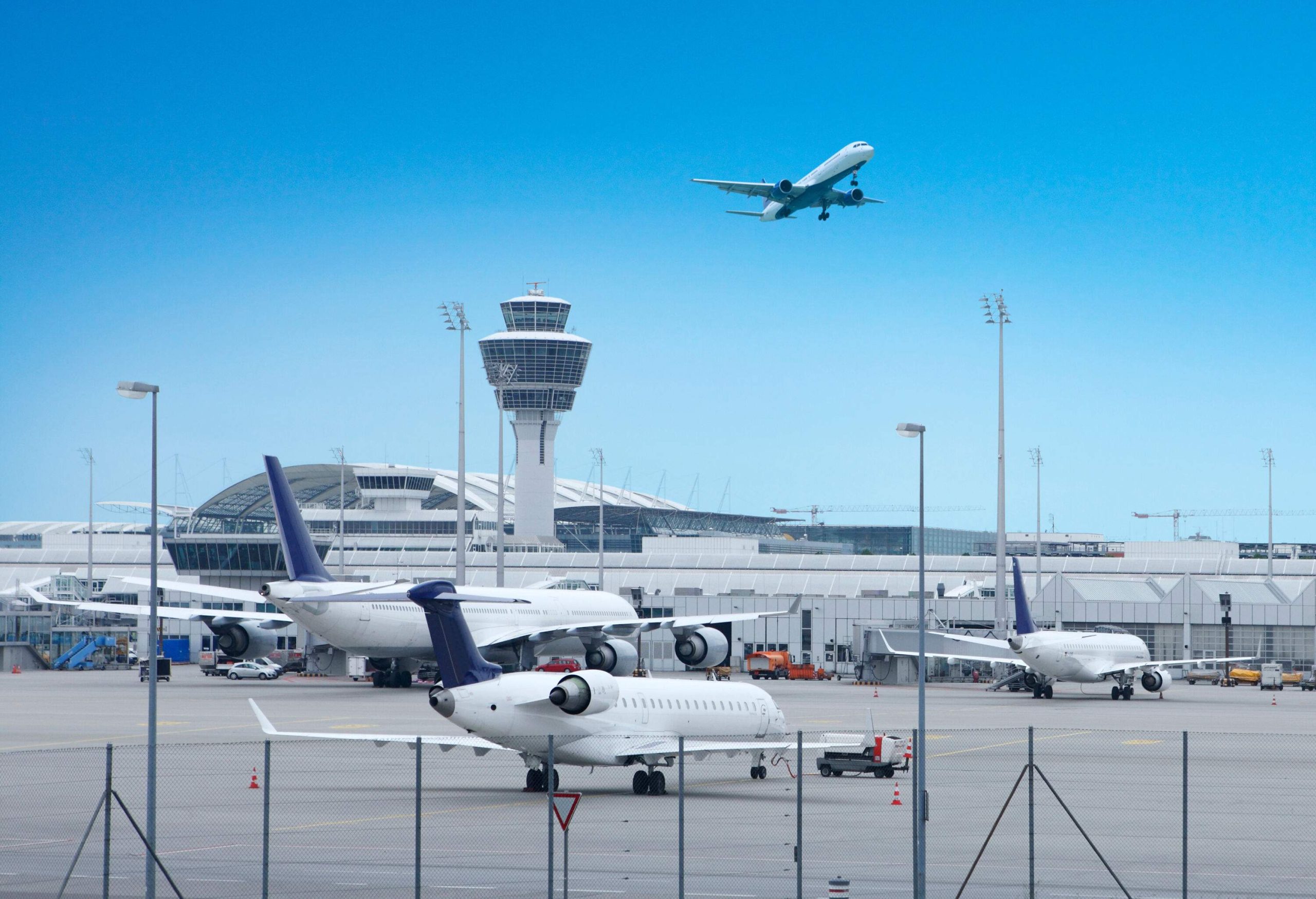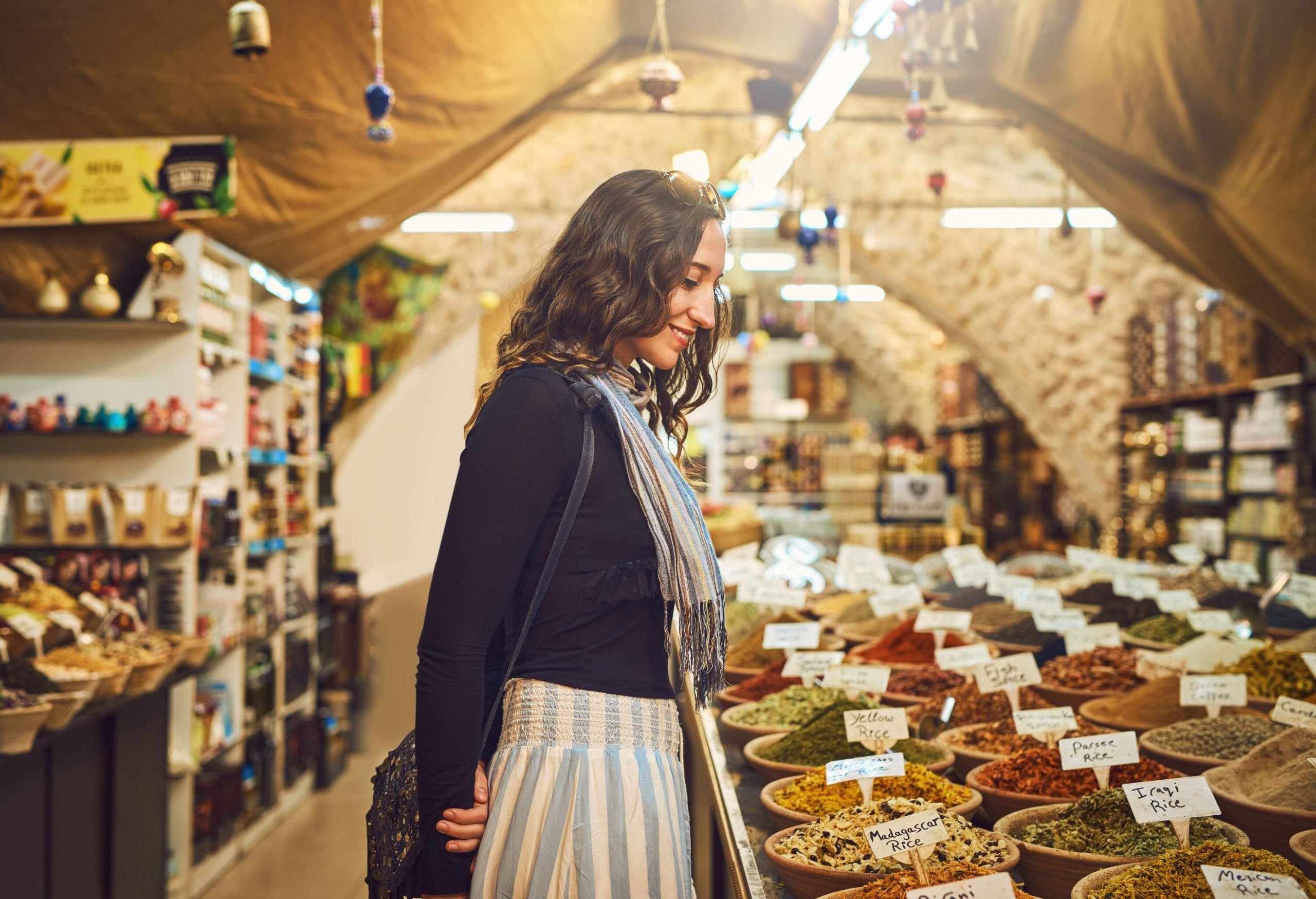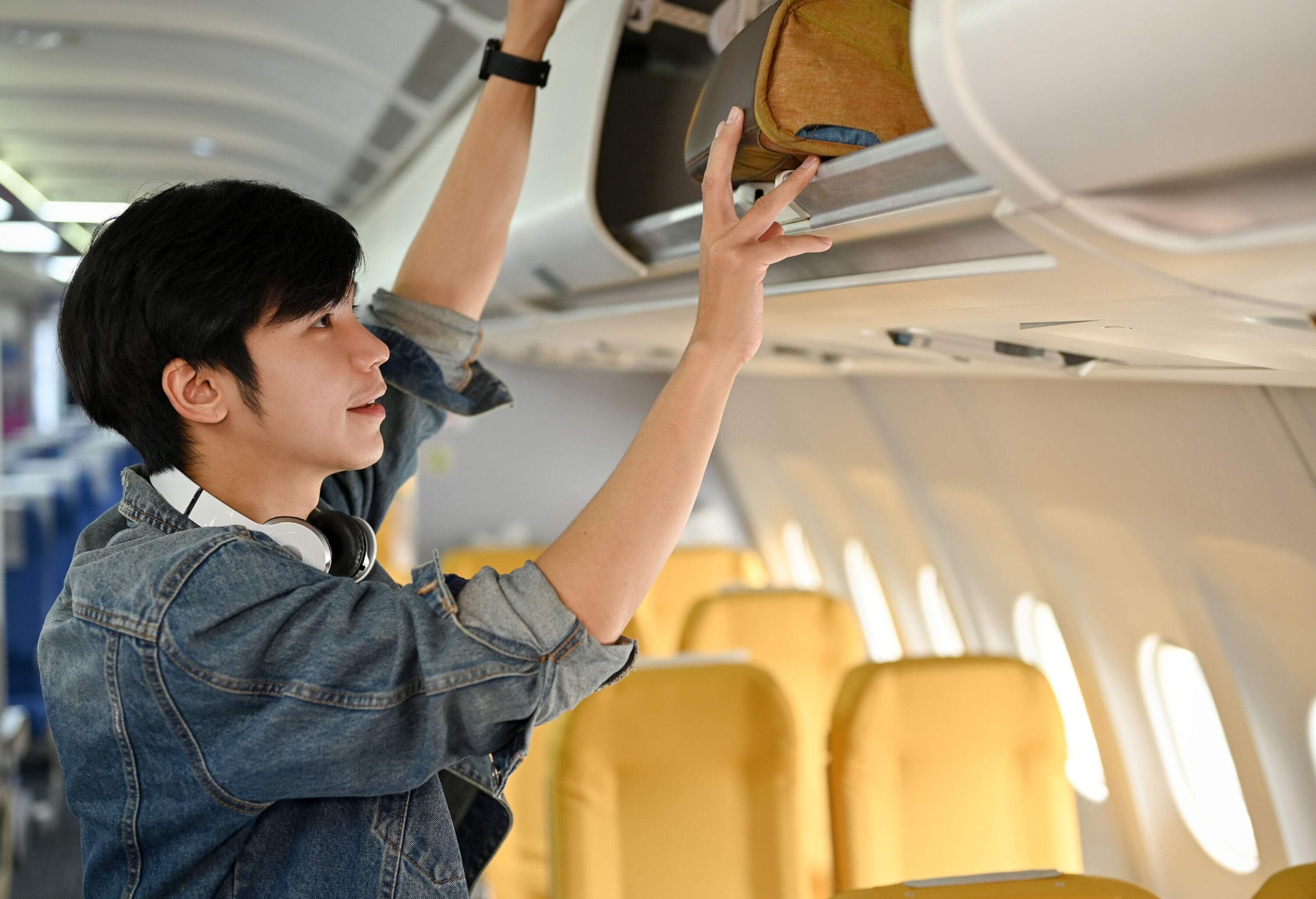Broadly speaking, you can almost always bring food on a plane. There are some limits and procedures to follow though, so it’s important to know all the rules before heading to the airport.
Types of foods allowed on a plane
You’ll be happy to know there are no specific food items that are banned on airplanes in the United States or by major US airlines. Similarly, food items are essentially unrestricted worldwide. What this comes down to is a question of which foods you can take through TSA versus which need to be packed in carry-on luggage. And that relies exclusively on whether your food items are completely solid. If not, they’ll need to comply with the TSA 3-1-1 rule of traveling in 3.4-ounce containers (or smaller), all sealed in one clear, zip-top bag of 1-quart volume or less.
Foods allowed on a plane
Specific food items are generally unrestricted on airplanes, either in your carry-on or in checked luggage. As mentioned above, the only true consideration is whether your food contains any liquid elements, in which case it must be packaged in containers that meet the TSA 3-1-1 rule if you prefer to carry it on.
Among the most amusing mysteries of TSA, the only announced exceptions to this rule are pizza, cake, and pie, which are TSA approved for carry-on even though they typically include some non-solid elements. They’ll need to be x-rayed for safety, though. To avoid repackaging partly liquid food items or recipes into several 3.4-ounce containers, simply check them instead.
Foods not allowed on a plane
Alcohol above 70% ABV (140 proof) is prohibited by TSA in both carry-on and checked luggage. Opened alcohol cannot be packed either, but alcohol between 24%–70% ABV (48–100 proof) is permitted up to 5 liters in checked luggage if it remains sealed. There’s no limit to the amount of sealed alcohol you can pack under 24% ABV (48 proof).
Packing food for air travel

Packing food for air travel is primarily a matter of common sense. There are no specific requirements for how foods are packed, other than the 3-1-1 rule for those with liquid elements in your carry-on, so pack food as you would pack any other fragile item in your luggage.
Tips for packing food items securely
If you think it’s just a joke that baggage handlers are rough with luggage, guess again. Checked luggage is tossed, pushed, stacked, and abused throughout its journey. It’s key to protect any packed foods by using sturdy containers and cushioning them with clothes and other soft items, to keep them away from the edges of the suitcase. For carry-on, food should be presented separately to TSA, so pack your snacks and other foods at the top of your bag for easy access.
Appropriate containers for flying with food
Choose lightweight yet sturdy containers when packing food in your checked luggage or carry-on bags. Airlines can be strict with weight limits, so don’t waste your allowance on heavy containers. Still, it’s important to make sure your snacks and meals won’t be crushed by other items in your luggage by using flimsy packaging, like bags or flexible containers. Also, avoid breakable materials like glass whenever possible.
Avoiding leaks and spills
Avoiding leaks and spills in checked luggage and carry-on is essential for protecting your belongings, including the bag. Securely tighten all bottles, tubes, and containers, and consider taping them for additional security. Masking tape should travel in a checked bag — this is typically not allowed in a carry-on, as I learned the hard way. Painter’s tape is allowed in both bags and works just as well to keep containers sealed.
Finally, carefully surround any glass containers (like wine bottles) with as much soft clothing as you can and don’t pack them against the edge of a suitcase where they’re more likely to suffer from impact in transit. You can also check out these expert travel packing tips for more insights on perfecting your luggage.
Contain anything holding liquid in an additional plastic bag in case it breaks or leaks in transit.
International travel considerations
Typically, neither check-in agents nor TSA agents will be concerned with what specific foods are in your bag. But if you’re flying internationally, there are a couple of added considerations.
Customs and import restrictions for food items
While you’ll often be able to check your bag and board your flight regardless of what foods are inside, you may run into hiccups on arrival if you haven’t paid attention to your destination’s import laws, especially regarding foods. Agricultural products like meats, dairy, produce, seeds, and nuts are often banned from crossing national borders to prevent diseases and pests from affecting local goods.
If you’re discovered attempting entry with prohibited foods like these, they’ll be confiscated and you may face additional consequences like fines, or even being denied entry yourself.
Tips for researching destination-specific rules

The best resource for understanding any country’s specific customs laws is its own website. For return trips to the United States, for example, consult the official U.S. Customs & Border Control guidelines for food, and seek the same from any country you visit, especially if you’re considering bringing agricultural foods. Most importantly, always declare all food when you arrive to avoid attracting fines or worse.
In the US, you’ll never be fined for illegal foods if you’ve declared them, but you could face up to $10,000 in penalties if you’re found sneaking them in, even unwittingly. Just declare.
Additional regulations when traveling internationally
If you’re connecting through another country, you may be required to pass through a security checkpoint again before boarding your next flight. In this specific case, you may be subject to carry-on rules that differ from TSA’s, and food items may be subject to additional scrutiny.
Because it’s often not possible to know exactly what another country’s practice will be when it comes to transporting and packaging food as carry-on, it’s safest to pack questionable foods in checked luggage during journeys with international connections. It’s unlikely that foreign regulations would differ significantly from TSA regulations regarding food, but it can happen.
Airline policies

While you’ll need to pay attention to your airline’s carry-on and checked baggage requirements to determine which is best for your food needs, you won’t have to do much more based on airline alone. All major carriers in the United States permit any food packed in the appropriate bag (checked versus carry-on), except MREs (meals ready-to-eat).
These packets, traditionally made for emergency military rations, often have a self-heating component that airlines consider dangerous. Technically, TSA does not ban them and only advises you to check with your airline, but all major US carriers currently prohibit them.
Other than that, you may need to be aware that you can’t carry fresh durian in most airports or airplanes in Southeast Asia, because of the fruit’s extreme odor, but this is not an airline-specific rule.
Some favorite routes
If you need a little inspiration of where to go with all your packed up foods and beverages, consider some of these popular routes.
On the East Coast cheap flights to New York can easily get you to The City That Never Sleeps, or cheap flights to Miami can have you basking in the sun of Southern Florida in no time.
To the west, check out these cheap flights to Los Angeles for spot some celebs, or these cheap flights to San Diego for idle afternoons in paradise. If you’re looking to bring your bites abroad, you can get to Europe quickly with these cheap flights to London.
How was this guide created?
I travel every week, averaging more than 100 flights per year, and I’ve taken plenty of food onboard for snacking and avoiding those sometimes-questionable inflight meals. I’ve also transported many food gifts around the world, frequently navigating customs both in the US and abroad. I’ve combined years of this frequent flyer experience with KAYAK’s expert tips and advice to create this guide so you can travel smoothly with your favorite foods, too.
Get going
Now that you understand how easy it can be to fly with your favorite foods, it’s time to put your skills to the test. KAYAK’s comprehensive flight guide delivers all the tips you need for planning and taking flights of every kind, so pack your favorite pizza and get going. Don’t miss the KAYAK Bag Measurement tool, which determines if your bags are size-compliant using only your phone’s camera. It’s as fun as it is helpful.
Flying with food FAQs
Homemade meals are allowed on planes, both in checked luggage and as part of your carry-on. If carrying on, be sure your homemade meal has no liquid elements (including pastes, creams, or anything not completely solid). If there are any liquids, it must be portioned and sealed in containers no larger than 3.4 ounces.
Many countries impose limitations on which food items you can bring into the nation. These are often agricultural products, including various meats, dairy, and nuts. Your luggage will rarely, if ever, be screened for this pre-departure. Instead, import concerns are addressed on arrival at customs, and violations can bring steep penalties.
You’re welcome to bring your own snacks and compliant foods onboard, but it’s not always necessary. Most airlines can accommodate a wide range of dietary restrictions if informed with enough notice, typically 24 hours in advance. Food allergies should always be reported to the airline when booking, and again to the flight attendant when boarding, so accommodations and precautions can be made.
Yes! You can bring frozen food on a plane in your carry-on luggage, under certain conditions. The food, along with any cooling accessories (like ice packs) must remain fully frozen at the time of TSA inspection. If there is any melting or visible liquid present the items will not be allowed to board with you.
For checked baggage, the only food item that is universally prohibited by major US airlines is an MRE. The self-heating element contained in many of these makes them a danger in the opinion of airlines, though TSA does not actually ban them. In carry-on, there aren’t specific bans on particular foods, but any food that is not completely solid will need to comply with the TSA 3-1-1 rule for liquids.



